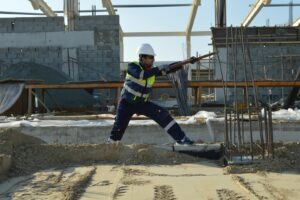 Chris Coxon of Eurocell plc, looks at the role buildings play in delivering an environment in which students can realise their full potential.
Chris Coxon of Eurocell plc, looks at the role buildings play in delivering an environment in which students can realise their full potential.
It goes without saying that the buildings we live, work and learn in have the ability to influence our well-being, happiness and performance. There have been numerous studies that reflect the link between our built environment and how we function in our daily lives, no more so than in education where great efforts are made to ensure that children have every opportunity to succeed.
A study by the University of Salford found that three-quarters of academic performance variation is caused by design and environmental factors. The study also found that the academic performance of a child in the best environment could be expected to be 25% better than an equivalent child in the “poorest” classroom environment.
This correlation between the quality of buildings and academic achievement has been one of the key drivers for the investment provided by consecutive UK governments in the UK’s school buildings, stretching back over the past decade and a half. During this time various initiatives have provided funding to either build new schools or improve existing buildings so that they deliver environments that support academic success. Indeed, most recently the government committed to providing a £400m ‘one-off bonus’ to help schools buy “the little extras they need” in its 2019 budget announcement.
Poor buildings impact learning
However, despite funding being made available, a recent survey of UK headteachers found that 70% of school buildings are not fit for purpose with issues ranging from crumbling walls to damp and the need for new windows and doors. Furthermore, as a result of budgetary pressures, 88% of schools had been forced to cut routine building maintenance, creating environments that are noisy, lack ventilation and natural light.
One of the most influential of these environmental factors on academic achievement is the quantity of natural light in the classroom. A 2016 European study found that students’ performance in Maths and logic tests improved by 15% when students took them in well-lit rooms. Equally important as light is sound, with numerous studies finding that excessive noise pollution, such as that from roads, airports and train stations, negatively impacts academic achievement. Indeed, a recent study by the World Health Organisation found that noise pollution adversely impacts children’s cognitive development.
Taking steps to improve the learning environment
The environment school buildings provide clearly needs to be viewed as a vital factor in students’ overall academic journeys. And despite the budget constraints that schools are currently facing, there are measures they can take to improve facilities so that they have a positive impact on student learning.
This starts with taking a fresh approach to building maintenance and design, which begins with considering different materials and products that have the potential to deliver the same results as their traditional counterparts at a lower cost. As an example, when it comes to window frames, PVC-U can be more cost-effective than aluminum and timber while being equally as durable and energy efficient. When multiplied across the various requirements of the school building this can begin to make a significant difference.
These savings may enable schools to address what may be trivial issues that actually severely impact the learning environment. This might include replacing doors with ones that allow more light into the building; taking steps to sound-proof classrooms; or installing roof lights in north facing classrooms to increase natural light.
This change in mindset has the potential to make it possible to do more to improve the learning environment with the same budget, enabling school building managers to explore creative ways to increase natural light and reduce noise pollution in classrooms. What’s more, this budget flexibility will enable schools to enhance the learning environment of buildings that they are unable to reconfigure.

















Leave a Reply